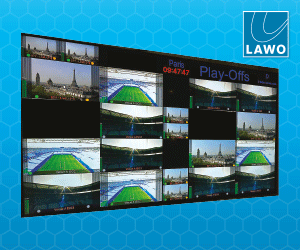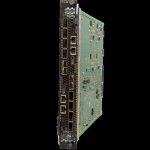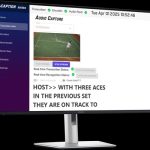Mosart Medialab will introduce version 3.0 of its newscast automation system at NAB. Mosart v3.0 debuts a new graphical user interface allowing users to create operating environments tailored to several production requirements or house styles. With its flexible on-screen display of elements needed during live broadcasting, Mosart v3.0 further extends Mosart’s ability to support ad-hoc […]
Mosart Medialab will introduce version 3.0 of its newscast automation system at NAB. Mosart v3.0 debuts a new graphical user interface allowing users to create operating environments tailored to several production requirements or house styles.
With its flexible on-screen display of elements needed during live broadcasting, Mosart v3.0 further extends Mosart’s ability to support ad-hoc operation. Users can assemble combinations of production elements into a collection of on-display buttons with touchscreen operation for on-the-fly response while on-air. In this way, Mosart v3.0 combines a high-level control of every gallery device with efficient random-based automation for ad-hoc live operation.
“It is often thought that using an automation system ties you to scheduled operation, without the ability to react instantly to events,” said John Kjellevold, managing director, Mosart Medialab. “We built Mosart from the ground up to be flexible in operation. Now, we have embodied that flexibility in a touchscreen interface that directors can use if they want to diverge from the scheduled rundown.”
With Mosart v3.0’s virtual shot-box, users can assign elements from stories to an on-screen button, and instantly recall elements by touch to the studio’s preview or program monitors. Elements can include technical events such as a clip, lower thirds and other graphics, and DVEs. The combination of buttons and elements can be created in the virtual shot-box, allowing the freedom to assemble assets for instant, ad-hoc use. Drag-and-drop functionality enables instant assignment of elements to shot-box buttons. To support rapid reaction during breaking events, multiple clients can be configured to allow a team of production assistants to select and assign elements to appear on the director’s on-screen shot-box.
For speedy location of elements, users can use Mosart’s new search window to find assets on connected playout servers, then drag them directly either to the timeline, to a shot-box button, or to v3.0’s new pool window.
The pool is another feature of Mosart v3.0 designed to extend flexible operation. The pool allows users to see a list of all technical assets, including clips and graphics, associated with a scheduled story. These assets can then be assigned to a global pool of elements for random access re-use. The pool makes it easy for news and sports production teams to assemble collections of events likely to be required for repeated use at any time, such as record-breaking performances at the Olympic Games, or crucial sound-bites in a developing political crisis.
Also making its first appearance in v3.0 is the script view, which presents the technical information and entire script for two stories in the rundown the current one and a second selected one.
Mosart v3.0’s customisable screen environment allows users to dedicate a screen to the shot-box display, or to arrange configurations of shot-box buttons, search window, script view, timeline and counter displays together on the same screen. Screen configurations can be saved as individual user logins or for standardised working environments.
Mosart version 3.0 also features enhanced handling of macros, sequences, loops, and graphical and event continue points. The sequences tool enables separate parallel rundowns that can be executed, for example, on a studio back wall. Macros and continue points simplify automation setup, allowing the director to program once, but then proceed through multiple events or effects. In Mosart 3.0, looping can be applied to rundowns, segments, sequences, and clips.















































































